The beauty of dissolving portraits
At Montreal's jazz festival, adventures in the unknown
1. Ask Me Now
I’m not sure what people have against piano benches this season. Within a few hours on Friday night at the Festival International de Jazz de Montréal, I saw two pianists, separated by 43 years in age and by a comparable stylistic distance, but who both devoted much of their concerts to standing upright over their keyboards.
I think they were even channeling different influences. Joey Alexander, a 20-year-old Indonesian who last played Montreal when he was 13, seemed to be trying to get closer to the deep impressionism of Keith Jarrett, who would often fiddle endlessly with the height adjustment on his bench before departing altogether from its comforts. Jean-Marie Pilc, a 63-year-old Frenchman who has been teaching for nearly a decade at McGill University, seemed to draw his permission, if little direct influence, from Thelonious Monk, who would sometimes get up from his piano to dance during his bandmates’ bass or drum solos.
Alexander is doing everything right for a musician his age. He checks out a wide range of stylistic options, hires more experienced bandmates and gives them plenty of leeway, resists the urge to fish for applause with cheap dazzle. But it takes time to integrate influences and find a voice. Pilc has been on that road for three times as long as Alexander has been alive, and the old-man ills that sometimes accompany experience — complacency, fatigue, the narrowness that comes from digging deep ruts — are not close to catching up with him. So of the two pianists, as I raced from venue to venue at the 44th edition of the world’s largest jazz festival, it was Pilc who stood out more strongly in my memory.
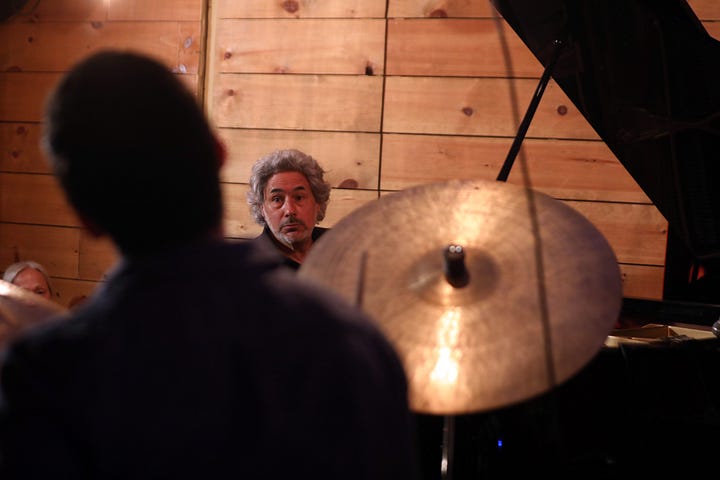

Pilc was playing the Dièse Onze, a very good basement jazz club on St. Denis Street, with two Americans, bassist Sam Minae and drummer Jerad Lippi. In a video on his Instagram page, Pilc says, “I think wisdom is very overrated. I prefer childishness.” He combines formidable technical resources with a child’s wide-open attitude about the possibilities of playtime.
Pilc’s departures from contact with his piano bench came in two different ways. Sometimes he and his bandmates would build up momentum with simple fragments of melody and groove, repeated through long crescendos to a concluding crash, and Pilc would find himself launched past the top end of the keyboard as if against his will. Other times he would stand straight and spend long seconds considering the keyboard from above, arms at his sides, like an army general pondering a battle map.
Or a kid planning a Minecraft campaign. That may be the better analogy, because Pilc and his colleagues like to build out a tune in directions none seemed to anticipate. A four-note accompanying figure might shift from background to foreground and then be pressed into service as a central theme for the next few minutes. A bass solo might begin before the bassist knew to plan for it. Long vamps could extend any part of a tune’s structure, or act as a pontoon bridge to another tune. I’m pretty sure I know when the trio started playing George Gershwin’s “Summertime,” but I have no idea when they stopped, because after a while it was just something else. It was barely “Summertime” even while it was “Summertime.” Some time later it was the Miles Davis tune “Nardis.” The number of stops along the way was indeterminate.
A note about navigating this long post: All photos are by Hasan Shaaban, an extraordinary photographer with long experience covering combat in his native Lebanon. He was a Massey journalism fellow in 2023-24 and now lives in Montreal. If you’re reading this on my website, click on any photo to see it nice and big.
The post’s title and all the mini-chapter titles are the names of jazz compositions, either standards or pieces by the musicians discussed here. Sometimes one of my goals when writing is just to please myself.
There’s no paywall on this post because I want the musicians to be able to see what I wrote. But if you are glad somebody is writing seriously about music as well as politics, I always encourage you to consider becoming a paid subscriber:
2. Deluge
The surprise is that a massive cultural and social event like the FIJM still finds room for intimate moments of discovery like Pilc’s club gig. If I’m honest, I’m no longer entirely sure why I still seek such moments out and write about them. All I know is that I have been writing about this music for as long as I’ve been writing about anything else, and it still feels good to spread the word.
If music criticism weren’t already dead, the Festival International de Jazz de Montréal might finish it off. The thing is too big to assess, or even to experience in any comprehensive way. The festival rolled into Montreal’s downtown core this year the way it always does — with a crash, like the parted Red Sea roaring back after Charlton Heston lowers his arms in The Ten Commandments. Montrealers, by now well used to the spectacle, seemed more pleased with their fate than Yul Brynner’s legions were with theirs.
I counted 28 concerts or other events in the program on only the festival’s first day. There would be nine more days like it. I threw everything I had at that first night and still managed to hear only five concerts, or enough of them to leave with an opinion. Which means I missed five times as much as I heard.
At the dawn of my career, at the Montreal Gazette, we had five writers assigned full-time to splitting up and assessing each of the festival’s paid indoor concerts for the next day’s paper. Festival season would kick off with a five-hour “planning meeting” at our favourite wine bar in mid-June. A month later, after the last notes faded, I would hang my liver on the shower rod to dry out and toughen. (A decade after I left the Gaz I stopped drinking, retiring my liver like a Habs jersey.) These days the paper publishes advance articles about a few festival shows ahead of time but carries no reviews. The French papers run very few. Copy deadlines are earlier, newsroom staffs smaller than they were.
3. Familiar Flower
It felt deliciously old-fashioned to return to Montreal with a pen and notepad for this year’s festival. The first concert of a festival always feels special, a communal baptism in rhythm and tune. Montrealers, who have been to dozens of summertime concerts if they’ve been to one, fall into familiar rituals, lining up early, scrambling for the best seats. This year my festival began with Jordan Officer, a local stalwart of the hollow-body electric guitar. The venue was Studio TD, a two-storey club on Ste. Catherine Street huddled close around its stage. At 150 seats, Studio TD is one-eighth the size of Le Spectrum, the legendary club that used to sit across the street and that it has to some degree replaced, but a night there still feels like an occasion despite the smaller dimensions.
Officer used to anchor the Susie Arioli Band, a venue for the poised delivery of courtly old jazz songs. On most nights Arioli, a light-voiced and unassuming singer, and Officer were the whole band. They parted on cordial terms and he’s been leading his own bands for more than a decade now. In 2020 he released three albums simultaneously, titled Jazz, Blues, and Country. He works at the confluence of those mighty rivers, never a dazzling picker but comfortable in his skin. The night marked the release of a new album, Like Never Before. Introducing the material to an audience that’s heard him many times felt like a conversation that resumes after years as though it had never paused.
Later on that first night another guitarist mined similar stylistic territory in a band with the same guitar-bass-drums instrumentation. Julian Lage, born in California 36 years ago, was a child prodigy who’s grown into a commanding presence. There’s as much Duane Eddy and Les Paul in Lage’s sound as classic jazz, a mythic American twang. Casually dressed and congenial behind an eternal three-day beard, he is for my money the most impressive guitarist to come along since the Berklee trinity of Pat Metheny, John Scofield and Bill Frisell rose in the 1970s.
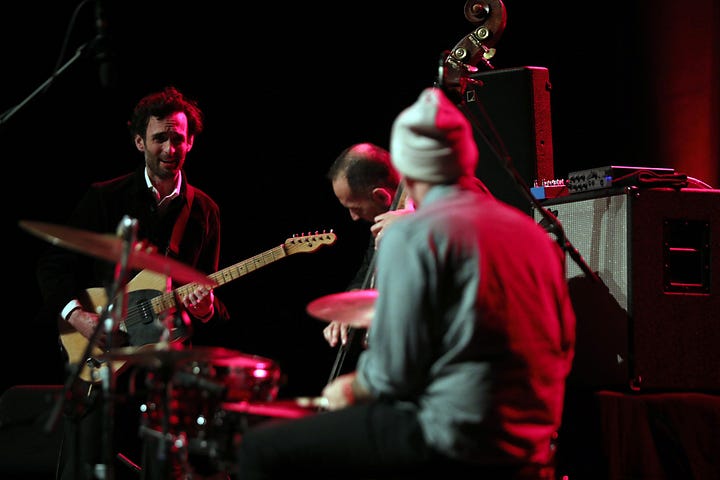
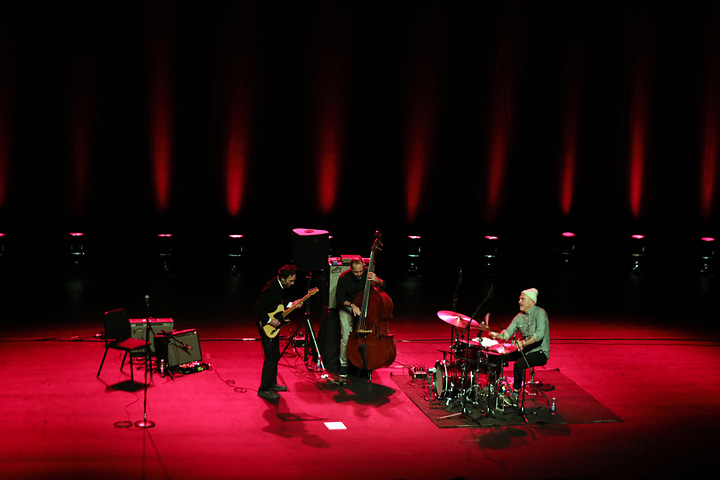
Montreal audiences sure love a visiting guitar hero. The two guys sitting next to me at the Lage concert chatted excitedly about effects pedals until the house lights went down. Each time a chorus from Lage became a lesson in tension and release, the pedal guys would tremble with excitement, quickly reaching an almost mitotic level of physical agitation.
This was the second time I’ve heard Lage in concert and I will make sure it’s not the last. But I suspect when the sums are added it will stand as one of his weaker outings.
For five years he has led a trio with the Peruvian bassist Jorge Roeder and the drummer Dave King, a beefy guy in a work shirt and a knit cap whose close interaction with Lage gives the band much of its unity and personality. The trio’s stock in trade is tuneful, loose-limbed original compositions that teeter enticingly in extended harmonic turnarounds before landing satisfyingly on the tonic. But that playbook feels more limited through overuse than it did the last time Lage played here in 2022. Lage’s extraordinary new album, Speak To Me, produced by the singer-songwriter Joe Henry, reads as a conscious decision to chart multiple paths toward fresher ground: acoustic guitars, larger ensembles, classically influenced complexity or alt-rock simplicity. Lage brought some of the album’s tunes but little of its freshness to Montreal. He’s too good to disappoint altogether, but his breakthrough performance will have to await a future visit.
4. Forget Everything You’ve Learned at School
Any event this large is a choose-your-own adventure. Most festival-goers wander through the downtown streets around Place des Arts, where assorted outdoor stages offer constant variety with no cost and no entry quiz. There’s not even much reason to know who you’re hearing. You just move toward the sounds you like and away from the rest. There are concession stands and the people-watching is epic. Only a few committed jazzheads approach these weeks the way cinephiles strategize for TIFF. I’m a strategizer. One of my goals was to hear two of the more intriguing young trumpeters of the age.
Adam O’Farrill brought his quartet Stranger Days from Brooklyn to what’s billed as the Molson Pub, an aluminum-frame tent covering part of a concrete floor across the street from Place des Arts. (Times have changed: when I lived in Montreal, Labatt had a lock on the jazz festival franchise.) The Molson Pub is where a lot of the festival’s straight-ahead jazz happens, while the sounds of louder goings-on from other stages bleed through the walls of the tent. It works surprisingly well. The crowds are a pleasant mix of aficionados and people who didn’t have anywhere else they needed to be.
O’Farrill and his brother Zack, the drummer in Stranger Days, are sons of Arturo O’Farrill, the Afro-Latin big-band composer and educator I wrote about in December. They often perform in their father’s ensembles, and they share with him a set of musical interests that extend well beyond Latin jazz. In fact Stranger Days doesn’t particularly sound like the father’s bands at all. It’s a tough two-horn quartet, with Xavier Del Castillo on tenor saxophone and Walter Stinson on bass. O’Farrill throws lots of little curve balls in his compositions, scraps of unison melody to end or launch a solo, cues for the band to switch rhythms. The overall effect is of a band that’s always concentrating. Free but not particularly interested in abandon. Those who like it, like this New York Times reviewer, like it a lot.
So did the audience. During a long exchange of four-bar phrases between O’Farrill and Del Castillo, the audience started roaring its approval after each of O’Farrill’s contributions. He’s an agile trumpeter with a tart edge in his sound. He’s listened to a century’s worth of hall-of-fame trumpeters but he wears their influence lightly, so you never know what he’ll play next. The critic Whitney Balliett once called jazz the sound of surprise, a label I’ve long found almost entirely useless. But what the hell, sometimes it’s the sound of surprise, and the crowd for Stranger Days ate it up.
Across the street in a plush-seat room at Place des Arts usually reserved for theatre, one of O’Farrill’s influences had concerts on two consecutive nights. Ambrose Akinmusire is 42, from Oakland, California. He’s a couple of years past the end of a contract with Blue Note Records that produced a succession of elaborate albums with ensembles of various sizes and makeups. The through line in all of it was Akinmusire’s lush, gorgeous trumpet sound. He once told an interviewer that he spent his formative years trying to make the trumpet sound like a French horn. This is impossible, but judging from the result, it was worth trying.
The string of concept albums on Blue Note ended, and these days Akinmusire plays in more intimate settings, often trios or duets. In Montreal he played his first concert solo, just him and his trumpet. I didn’t attend, but the night permitted Hasan Shaaban to take the eerily beautiful photo that’s at the top of this post. The next night I showed up to hear Akinmusire play duets with British bassist Dave Holland, who’s 77 and has been a ready partner for musical adventurers since he joined Miles Davis’s band in 1968.
I’m going to say it was a swing and a miss. Akinmusire’s scrappy 2017 live album from the Village Vanguard was called A Rift in Decorum. This concert was mostly decorum. Tempos were slow or absent. Both men read from sheet music that seemed unfamiliar to them. Holland’s extraordinary musical intelligence was in play, and that sound Akinmusire gets from his horn remains compelling, so the concert had its moments. But the collaboration never lifted.
I’ve spent many nights in rooms like that. I’m increasingly comfortable with leaving them. Does music really need tempo or a defined objective? Of course not. Does that seat really need my ass in it? Same answer.
5. Give Me A Reason
Between the smaller venues where I spent most of the weekend and my hotel is the Place des Festivals, an esplanade covering a full city block west of Jeanne Mance Street. It’s the clearest of many signs that nearly half a century of summer festivals have physically shaped Montreal’s downtown core. Without much prep time, the Place des Festivals can easily hold 40,000 people to watch a concert on what, during the jazz festival, is called the Scène TD, the city’s largest outdoor stage. Video towers carry images from the stage to the folks at the back. The crowd size can double if the act onstage is big enough and people don’t mind getting cozy.
Music on the Scène TD is more often jazzy than jazz, but it’s usually at least interesting. Besides, pleasing crowds is its own challenge, and bands fail often enough. Walking westward on Saturday from what I thought was my last jazz festival concert of the year, I paused to watch Dominique Fils-Aimé take the big stage.
Montreal-born from Haitian parents, Fils-Aimé brings a sultry voice and warm personality to a succession of meticulously crafted albums. Her first three releases, from 2017 to 2021, form a trilogy that explored the roots of Black American music: blues, jazz and R&B. Her latest album, Our Roots Run Deep, launches a new trilogy on more personal themes.
Anyone who conceives her albums in sets of three must be ambitious. Can she deliver? I’ll say. (This brief video gives you a sense of her work.) Guitars, keyboards, percussionists, a backup vocal choir and a trumpet soloist gave her a lot to work with. She managed not to be overwhelmed by everything else that was going on onstage. The crowd — not one of the largest this park has seen, but that will change when she returns — was rapt. Music doesn’t always have to be about leaving everything to chance, and sometimes the point of a jazz festival isn’t how much jazz is in it, but whether it’s festive. On Saturday, it was.
• The Festival International de Jazz de Montréal runs through July 6. Most concerts are free. Here’s the program. Good luck navigating it if you’re a newbie. In a lot of ways the best strategy is just to go.




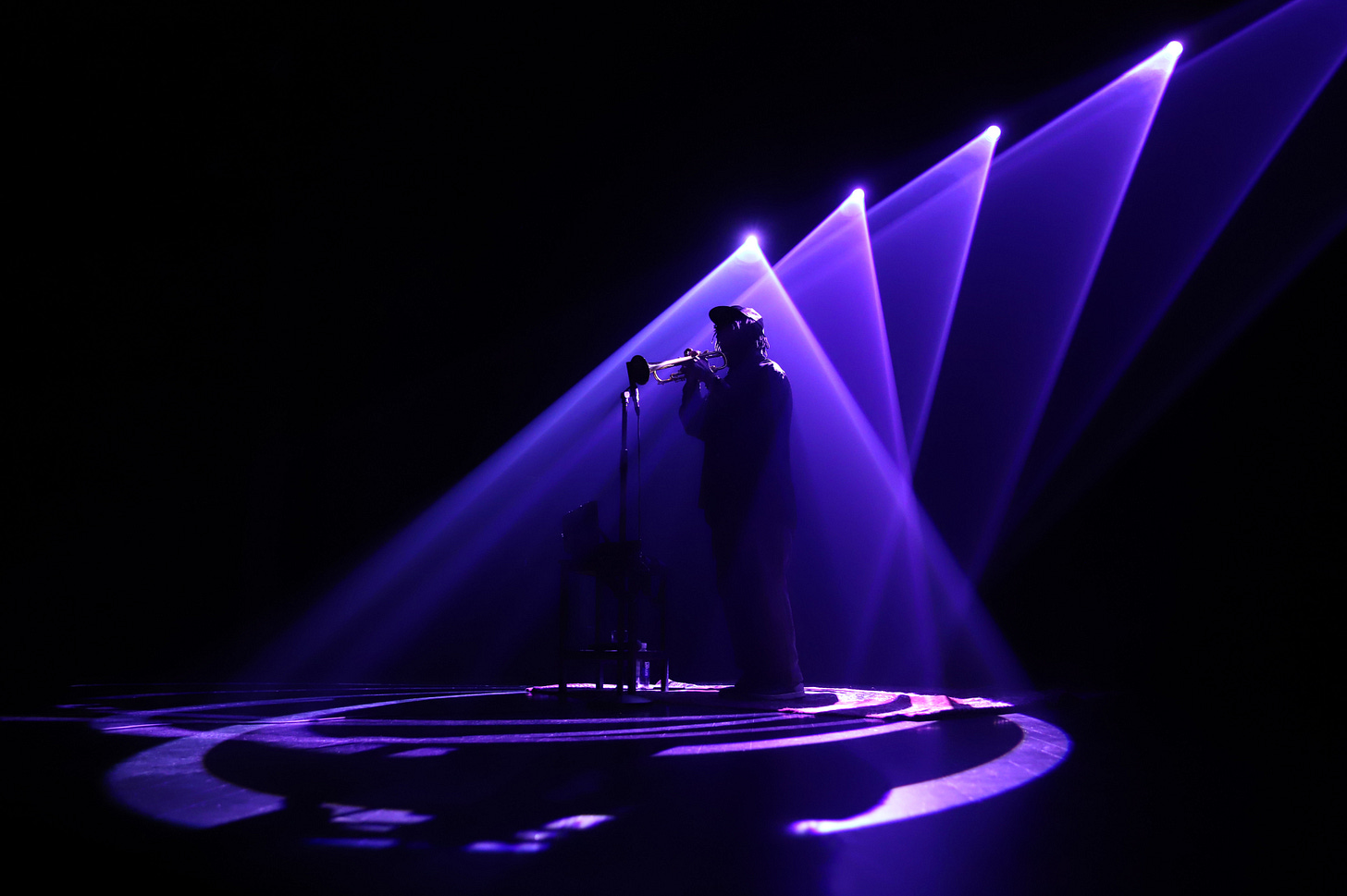
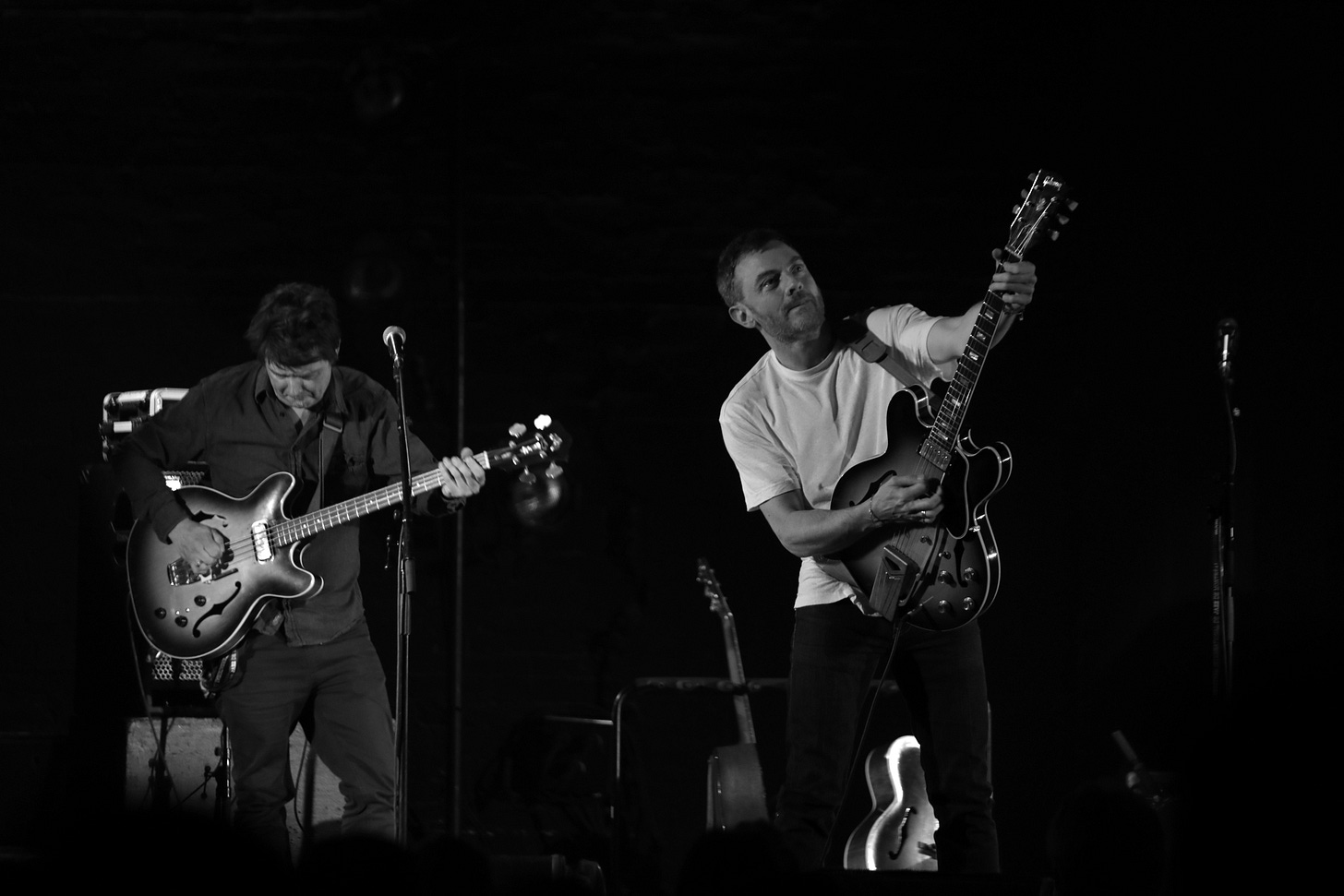
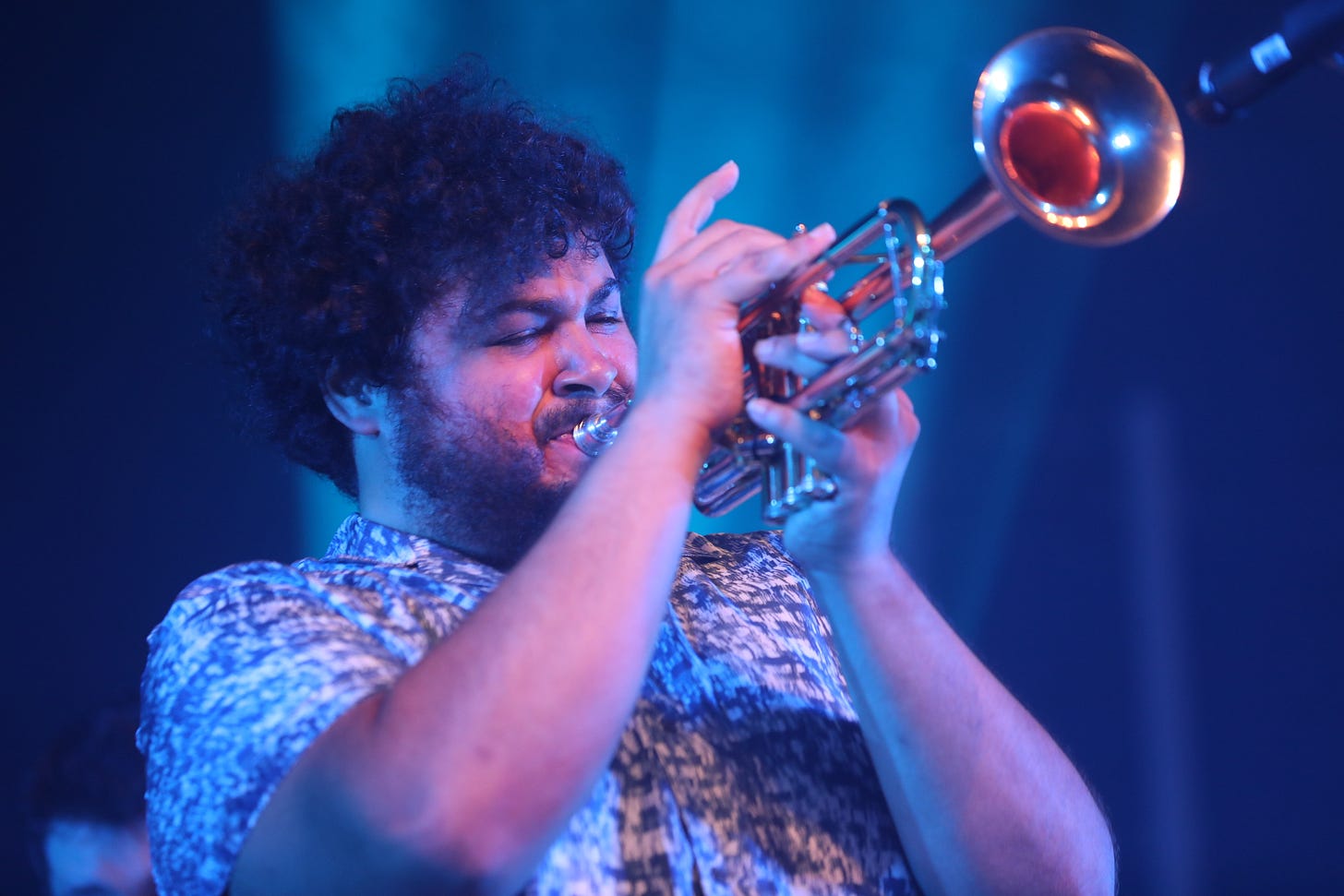


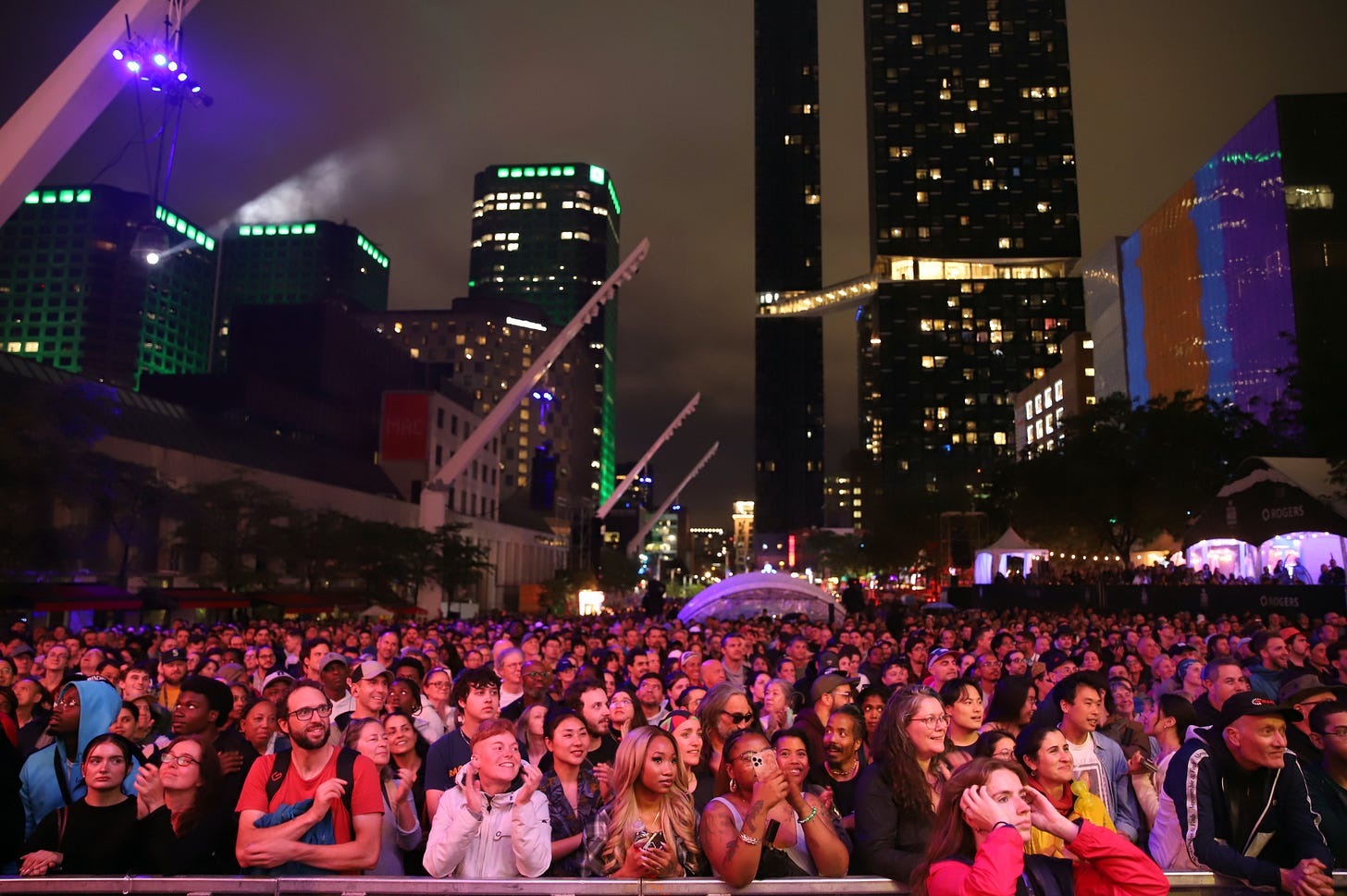
I met my first love during the Montreal Jazz Fest at age 17 — always a bit of magic happening there. Very true about how the festivals have marked the city forever.
A shout-out to Ottawa Jazz Fest this week. Lake Street Dive was sublime.
What a great (and unexpected!) article, I was drawn in within the first few lines. Writing so deeply about music is rare these days, I really enjoyed it.